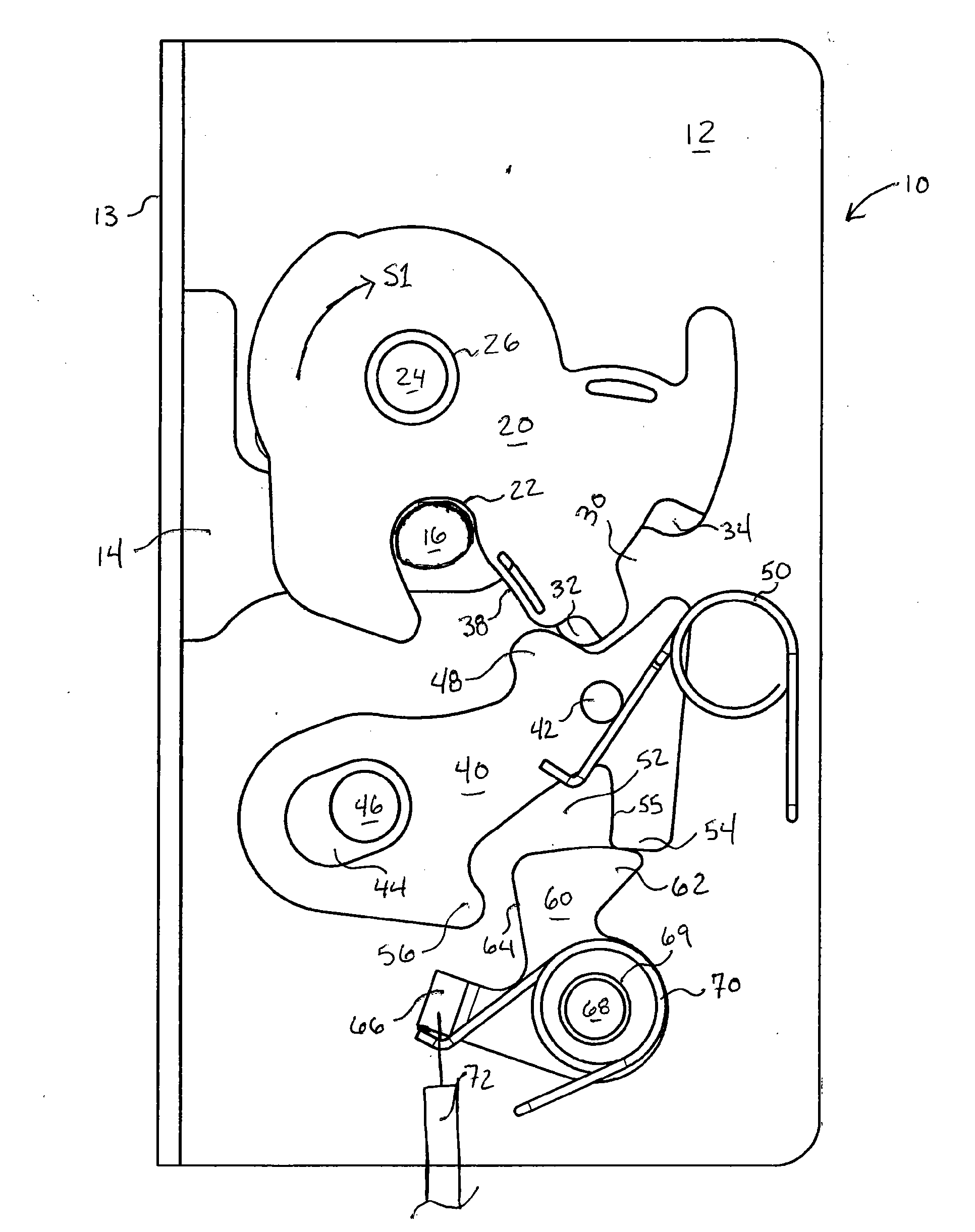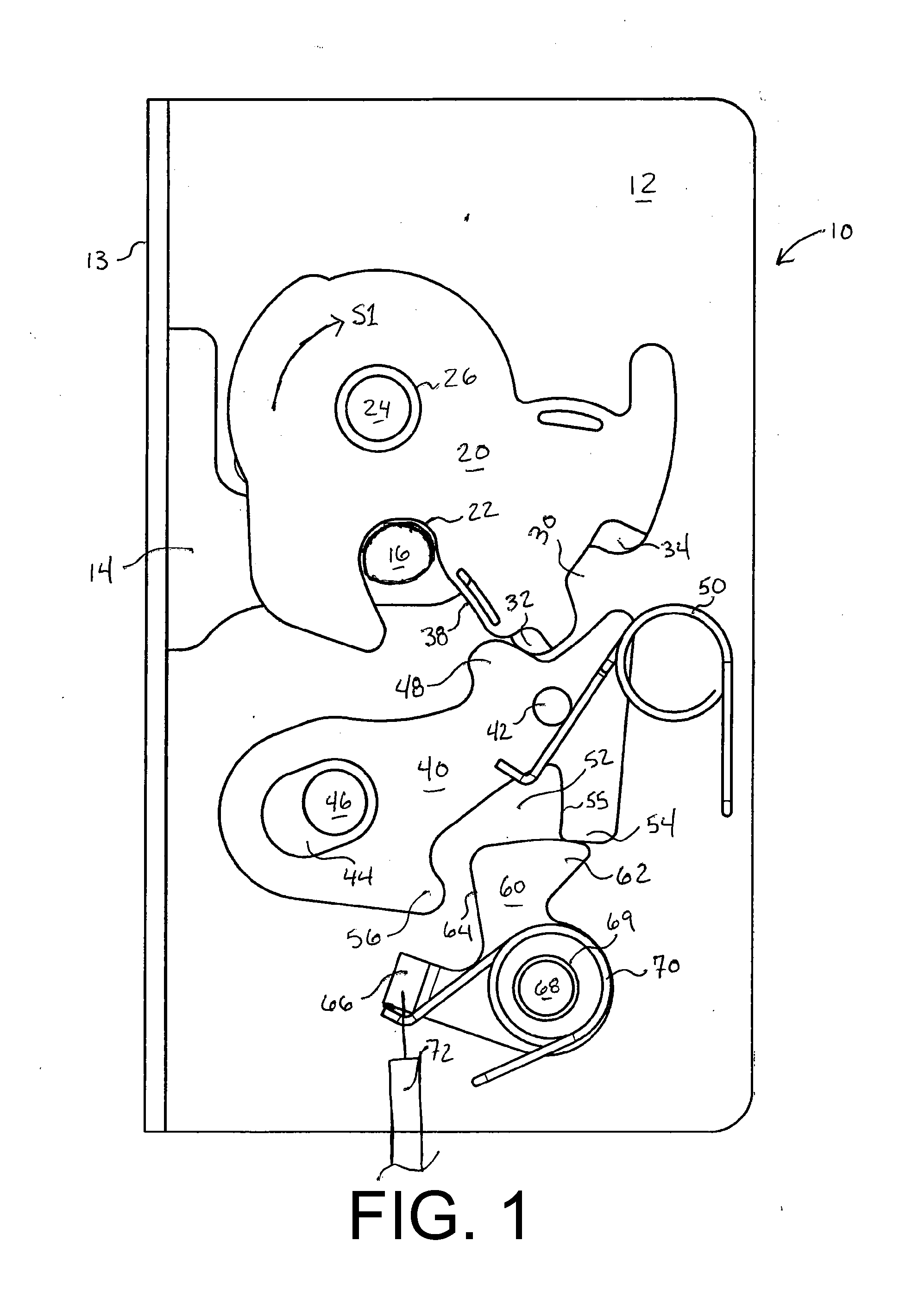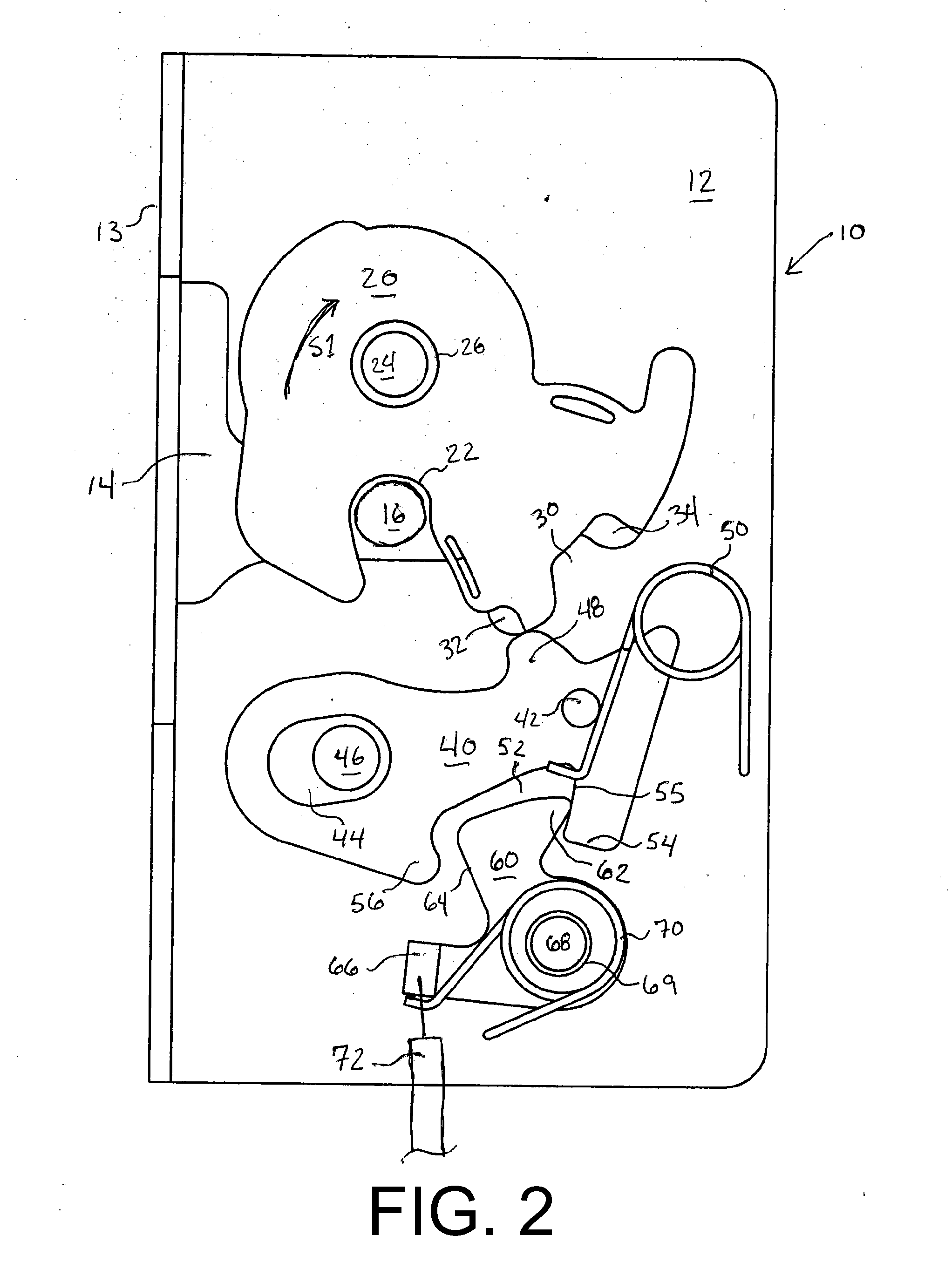Lock unit having a slotted pawl
a locking unit and slotted technology, applied in the field of door latches, can solve the problems of damage to the locking unit, noise and actuation force caused by opening the vehicle door, and the occupant of the moving vehicle is a danger, so as to reduce the size and manufacturing cost, simplify the design, and minimize noise and actuation for
- Summary
- Abstract
- Description
- Claims
- Application Information
AI Technical Summary
Benefits of technology
Problems solved by technology
Method used
Image
Examples
Embodiment Construction
[0017]Referring to FIGS. 1 and 3, a lock unit 10 according to an embodiment of the present invention is shown in the primary latched position and the open position, respectively. The lock unit 10 includes a baseplate 12 for mounting the lock unit 10 to a door, hatch or tailgate of a vehicle with a slot 14 facing a striker 16 mounted to the vehicle body. Typically, the striker 16, or catch bolt, is a pin or U-shaped bracket mounted to a partition at the rear side of the vehicle doorframe and extending into the plane of the door opening. The lock unit 10 is typically mounted opposite the vehicle door hinges with the leading edge 13 of the baseplate 12 facing the striker 16 and the components of the lock unit 10 being disposed in the vehicle door. With such a configuration, as the vehicle door is shut, the striker 16 extends into the slot 14 of the baseplate 12 and into a first recess 22 of a catch 20 to rotate the catch 20 from an open position (FIG. 3) to a primary latched position (...
PUM
 Login to View More
Login to View More Abstract
Description
Claims
Application Information
 Login to View More
Login to View More - R&D
- Intellectual Property
- Life Sciences
- Materials
- Tech Scout
- Unparalleled Data Quality
- Higher Quality Content
- 60% Fewer Hallucinations
Browse by: Latest US Patents, China's latest patents, Technical Efficacy Thesaurus, Application Domain, Technology Topic, Popular Technical Reports.
© 2025 PatSnap. All rights reserved.Legal|Privacy policy|Modern Slavery Act Transparency Statement|Sitemap|About US| Contact US: help@patsnap.com



